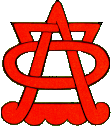 |
| This
book has its origin in a number of years of study conducted by the author
on the subject. More than fifteen of those years were spent in situ,
in Brazil, Colombia, Ecuador, Peru, Costa Rica, Mexico, and Guatemala.
The author has likewise devoted several periods of time to research in
libraries and museums of Europe and the United States. Two of the chapters
of this book were read by the author at a seminar on Symbolism held at
the Marcelino Menéndez y Pelayo International University of Santander,
Spain, in 1987. The volume itself, is presented as a contribution to the
study of the Precolumbian tradition, as it deals with the cosmogony and
theogony of the native peoples as revealed through their cultural symbols.
No sooner had the author begun to conceive the notion of a work on Precolumbian symbolism, than he noticed that its perspective would scarcely be grasped without a preliminary exposition of certain ideas (symbol, myth, rite, traditional society, and so on)-that is, without the theoretical framework within which his work is comprised. In short, not only must his book treat of the Precolumbian, its cosmogony, and its theogony, but it would have to constitute an introduction to Symbology. A work of this type must necessarily be synthetic (almost an outline): it will therefore be impossible to consider the subjects upon which we shall touch in the wealth and scope that each of them deserves. Such projects must be reserved for later occasions. However, we think that this work will offer an opportunity for an essential understanding of the ancient American cultures-and of the "primitive," archaic, and traditional cultures in general-as well as provide a launching pad for further research and work for those interested in symbol and Precolumbian cultures. The author may as well admit that this is what has happened in his own case. The study of Indian traditional symbols contributed to his understanding of universal symbols, and the knowledge of these universal symbols enabled him to comprehend certain elements of the thought and cosmogony of the Precolumbians. This study is addressed to the nonspecialist-although experts may perhaps be able to draw some profit from it-and, as we have said, is for persons aspiring to an internal assimilation of Symbology and its functioning, as well as for those who are intrigued by, and feel drawn toward, Precolumbian or archaic cultures. The author would like to express his deep appreciation here to the industrious chroniclers, commentators, and researchers of all times, foreign and American, thanks to whom the writing of this book has been possible-a book meant to be, to the extent of its capacities, a homage to native thought-and whose works, some, are cited in the text and the bibliography. Finally, the author wishes to go on record as believing in the activating capacity of symbols, in their transformatory virtue, just as he maintains that these symbols are present today, only waiting to be recalled to life. |